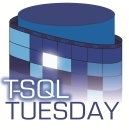T-SQL Tuesday #186 Roundup - Managing Agent Jobs
Thank you to everyone who contributed to this month’s T-SQL Tuesday!
Here’s a roundup of the posts.
Steve Jones (Blog | Twitter) wrote about managing jobs on over 500 instances with a tiny team. Naming conventions become hugely important to understanding things at a glance.
Deborah Melkin (Blog | Bluesky) talked about treating Agent jobs just like any other application code by keeping the scripts in source control, adding them to the deployment process, and testing them across all your environments. This is something I need to get better about.
Rob Farley (Blog | Bluesky) said he was “secretly fond of this month’s topic” but the cat’s out of the bag (or is the lobster out of the pot?), as he also brought us a post about the scriptability of Agent jobs, in the form of PowerShell-to-TSQL. A great pairing with Deborah’s post.
David Wiseman (Blog | Bluesky) presented the Agent-related features of DBADash with visual job status and runtime summaries, timelines, alerting, change tracking, and more.
Ja Ca stopped using SQL Agent to run SSIS packages and instead wrote their own Windows service to handle them. This approach is new to me but if you need to distribute the workload of resource-intensive packages, it’s definitely an option.
Chad Callihan (Blog | Twitter) wrote about naming conventions to make job owners more apparent and a process for safely removing old jobs from your environment.
Todd Kleinhans (Blog | Twitter) reminds us that the absence of an error does not mean that a job did what you expected. Excellent reminder; I’ve had many an Agent job appear to be successful, but the PowerShell script it called actually failed without reporting the exception back to Agent.
Robert Douglas (Blog) took us on a journey through maintenance plans before arriving at the ability to use branching for controlling the flow of an Agent job. This is something I have to remind myself of periodically, because it is quite powerful. But I keep a pad of paper handy to draw out a flowchart in case I get in over my head.
And finally, my own post about visualizing job runtime and history.
Thank you to everyone who contributed to T-SQL Tuesday this month! I’m looking forward to next month’s topic, and hopefully hosting again next year!

